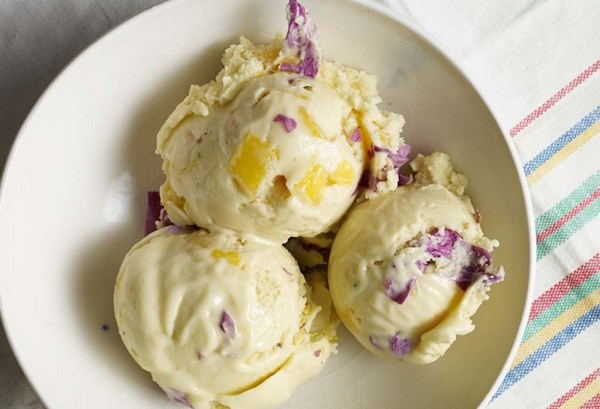Beautiful to grow and wonderful to eat
July 11, 2020 by DarcieGardening has long been a hobby for me. I inherited the gardening bug from my parents, who grew an assortment of vegetables, fruits, and flowers in gardens scattered across our small suburban lot. While it’s obvious when you are growing vegetables that you plan to eat them, the same cannot be said about gardens that showcase beautiful blooms. There are many plants, however, that not only look spectacular as ornament but that also can be used in cooking.

The first thing people think of when looking at a gorgeous flower is to add the petals as a garnish, but that’s only scratching the surface of how they can enhance your cooking and baking. Indexed website Great British Chefs provides us with more ideas along with an illustrated guide to the best edible flowers. In addition to providing bursts of color in a salad or atop a dessert, flowers can be made into tea, rolled into pasta dough, added to jams and jellies, and much more. The website also provides over 80 recipes for more concrete ideas on how to use these blooms.
One flower that caught my attention was the marigold, aka calendula. While I knew it was useful in the garden to repel pests, I did not know that marigold petals were once used to color butter and cheese, often called ‘poor man’s saffron’. Only the petals are edible, with a spicy, citrus flavor. Other flowers detailed in the guide include violas, nasturtium, and rose. Rose petals find their way into many types of dishes ranging from the Rose petal, marshmallow, mango and pistachio ice cream by Pati Jinich pictured above to cocktails to spicy rose harissa.
You might be tempted to walk through your neighborhood to pinch a few blooms to use in cooking and while that is a splendid idea, you should make sure that you have properly identified the plant you want to consume and know whether it is safe to eat. Of course, you should also ask permission before taking anything that isn’t on public property. Growing your own plants is a fun way to have a steady supply of edible flowers throughout the growing season. You don’t need a large garden to do this; most flowers will happily grow in containers, all they need is light and water.
Categories
- All Posts (6940)
- Antipasto (2135)
- Author Articles (247)
- Book News (935)
- Cookbook Giveaways (983)
- Cookbook Lovers (257)
- Cooking Tips (109)
- Culinary News (299)
- Food Biz People (552)
- Food Online (791)
- Holidays & Celebrations (272)
- New Cookbooks (149)
- Recipes (1500)
- Shelf Life With Susie (231)
- What's New on EYB (133)
Archives
Latest Comments
- kmwyman on Rooza by Nadiya Hussain – Cookbook Review and Giveaway
- Maryd8822 on The Golden Wok – Cookbook Giveaway
- Dendav on Danube Cookbook Review and Giveaway
- sanfrannative on Rooza by Nadiya Hussain – Cookbook Review and Giveaway
- darty on Danube Cookbook Review and Giveaway
- Atroyer7 on Danube Cookbook Review and Giveaway
- demomcook on What foods do you look forward to the most for each season?
- demomcook on Danube Cookbook Review and Giveaway
- Darcie on How cookbooks can help build resilience
- mholson3 on Danube Cookbook Review and Giveaway